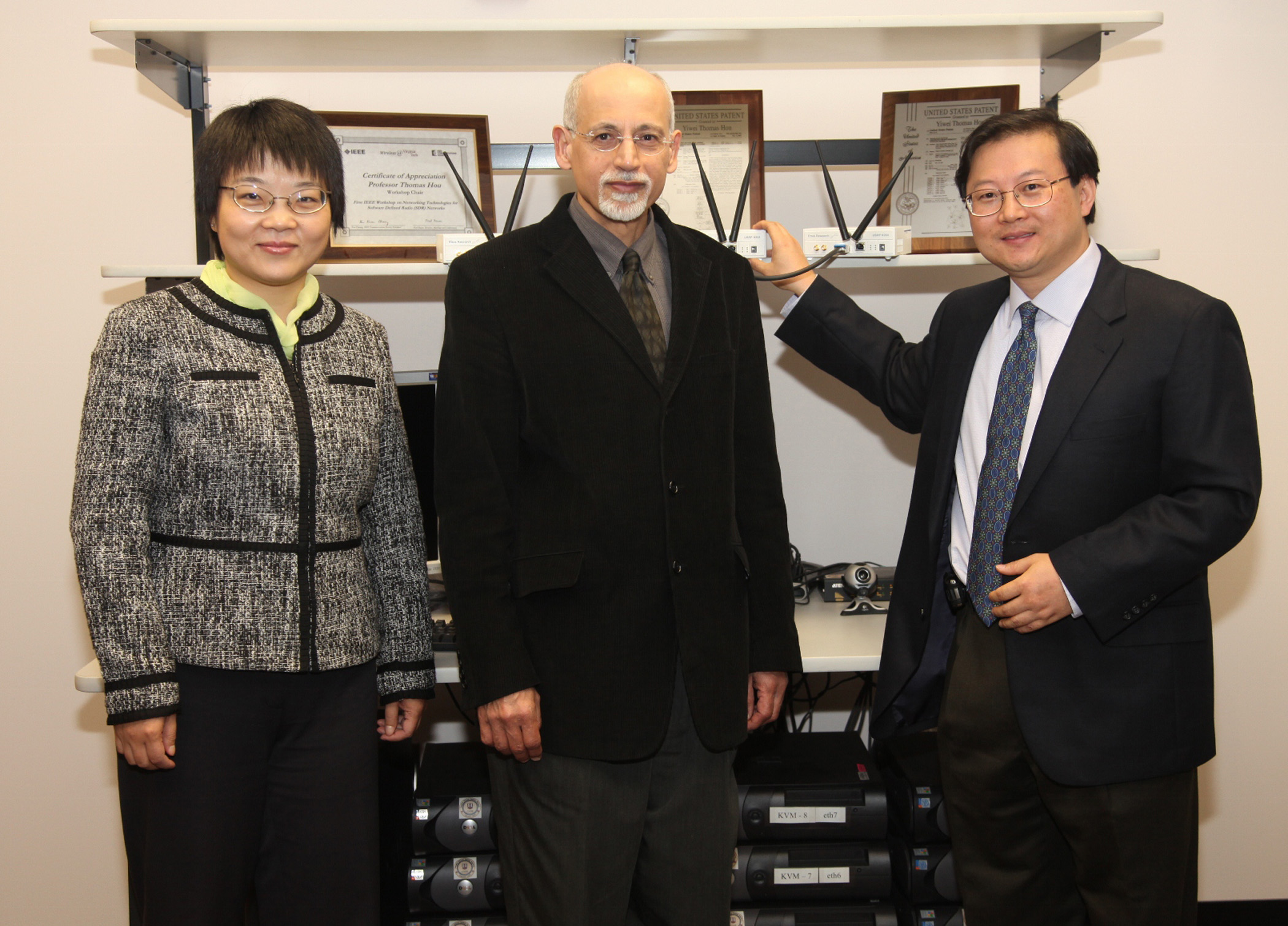Virginia Tech engineers awarded $800,000 to improve radio spectrum usage

Cognitive radios, the "intelligent" cell phones or police radios that help determine the best way to operate in any given situation, are becoming the "radio platform" of the next generation of wireless communications. They are also expected to play a major role in tactical communications for the U.S. Navy and for the Department of Defense," said Thomas Hou, professor of electrical and computer engineering in the College of Engineering at Virginia Tech.
However, a major technical obstacle remains and that is the availability of frequency space on an already crowded wireless array of networks.
Hou and his colleagues Wenjing Lou, of computer science, and Hanif Sherali, of industrial and systems engineering, have proposed some novel solutions for spectrum sharing that may avoid the presence of interference. Both the National Science Foundation and the Office of Naval Research are funding their work on efficient spectrum sharing, although each grant addresses different types of problems and different application domains.
Cognitive radios are valued because they will configure to their environment and their user's needs. The new cognitive radios are similar to living creatures in that they are aware of their surroundings and understand their own and their user's capabilities and the governing social constraints. Under development for more than a decade, cognitive radio transmission still faces challenges.
To address some of these issues, the NSF project, valued at $500,000, is aimed at a much higher efficiency sharing of the spectrum where the networks actually coexist.
"In the wireless networking community the prevailing spectrum-sharing paradigm is that secondary cognitive radio nodes are allowed to use a spectrum band allocated to primary nodes only when the primary nodes are not using the band," Hou, the principal investigator on the projects, said. The Federal Communication Commission requires that secondary nodes should not produce interference that might be harmful to primary nodes.
"But if we can somehow configure secondary nodes not to be felt by the primary nodes, then we can achieve transparent coexistence," Hou added. This is the main research theme of the NSF grant.
Specifically, the team says they plan to explore the potential of the simultaneous activation of a secondary network with the primary network, as along as the interference produced by secondary nodes can be properly controlled (e.g., canceled) by the secondary nodes. That is, secondary users share the spectrum in a much more aggressive manner than the interference-avoidance paradigm.
"Here, secondary nodes are allowed to be active as long as they can cancel their interference to the primary nodes in such a way that the primary nodes do not feel the presence of the secondary nodes. "Activities by the secondary nodes are made in a transparent or invisible way to primary nodes," Hou explained.
Under this paradigm, secondary nodes use powerful physical layer capabilities to handle interference cancellation. "Further, the burden of this interference cancellation will solely rest upon the secondary nodes so as to be truly transparent or invisible to primary nodes. As expected, such a paradigm has the potential of offering much greater spectrum efficiency and network capacity than those under the existing paradigm," Hou added.
The second grant, awarded by the ONR and valued at $300,000, will allow Hou, Lou, and Sherali to look at specific spectrum-sharing methods for tactical communications.
In this project, they will explore a new spectrum-sharing method for DoD and the Navy's cognitive radio ad hoc networks. The proposed method is called cooperative sharing, specifically targeted to the application scenario where the DoD or Navy's ad hoc network, in the role of a secondary network, wishes to access the radio spectrum in a friendly environment where the underlying spectrum is owned by allied coalition forces network.
With this method, a secondary network and the primary network share each other's network resource or nodes in a cooperative and friendly manner. "Although packets from the primary network may still enjoy priority over packets from the secondary network, packets from either network will take advantage of the nodes in the other network on their way to their destinations," Hou explained.
"The proposed cooperative sharing paradigm allows complete sharing of network resources between the primary and secondary networks in a cooperative manner. The priority of traffic from the primary network can be preserved while network connectivity and other network performance metric can be improved for both networks. This new paradigm allows many new possibilities for DoD ad hoc networks to access radio spectrum and significantly enhance the Navy's tactical communications capabilities," Hou added.
Hou is the co-editor of Cognitive Radio Communications and Networks: Principles and Practice, adopted as a textbook by a number of universities around the world. Lou has a NSF CAREER Award based on the study of wireless networks. Sherali, a member of the National Academy of Engineering, is world-renowned for his abilities in designing optimization algorithms.




